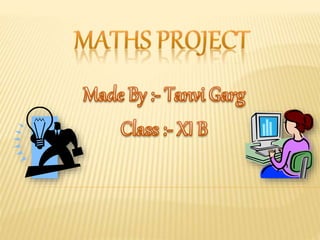
Chapter 1, Sets
- 3. Set theory is the branch of mathematics that studies sets, which are collections of objects. Although any type of object can be collected into a set, set theory is applied most often to objects that are relevant to mathematics. The modern study of set theory was initiated by Cantor and Dedekind in the 1870s. After the discovery of paradoxes in informal set theory, numerous axiom systems were proposed in the early twentieth century, of which the Zermelo–Fraenkel axioms, with the axiom of choice, are the best-known.
- 4. Set theory begins with a fundamental binary relation between an object o and a set A. If o is a member (or element) of A, we write . Since sets are objects, the membership relation can relate sets as well. A derived binary relation between two sets is the subset relation, also called set inclusion. If all the members of set A are also members of set B, then A is a subset of B, denoted . For example, {1,2} is a subset of {1,2,3}, but {1,4} is not. From this definition, it is clear that a set is a subset of itself; in cases where one wishes to avoid this, the term proper subset is defined to exclude this possibility.
- 5. Just as arithmetic features binary operations on numbers, set theory features binary operations on sets. The: 1) Union of the sets A and B, denoted AUB, is the set whose members are members of at least one of A or B. The union of {1, 2, 3} and {2, 3, 4} is the set {1, 2, 3, 4}.
- 6. 2) Intersection of the sets A and B, denoted , is the set whose members are members of both A and B. The intersection of {1, 2, 3} and {2, 3, 4} is the set {2, 3}.
- 7. 3) Complement of set A relative to set U, denoted A’ , is the set of all members of U that are not members of A. This terminology is most commonly employed when U is a universal set, as in the study of Venn diagrams. This operation is also called the set difference of U and A, denoted A’ The complement of {1,2,3} relative to {2,3,4} is {4}, while, conversely, the complement of {2,3,4} relative to {1,2,3} is {1}.
- 8. •Symmetric difference of sets A and B is the set whose members are members of exactly one of A and B. For instance, for the sets {1,2,3} and {2,3,4}, the symmetric difference set is {1,4}.
- 9. The power set of a set A is the set whose members are all possible subsets of A. For example, the power set of {1, 2} is { {}, {1}, {2}, {1,2} }.
- 11. In this we define a set by actually listing its elements, for example , the elements in the set A of letters of the English alphabet can be listed as A={a,b,c,……….,z} NOTE: We do not list an element more than once in a given set
- 12. In this form,set is defined by stating properties which the statements of the set must satisfy.We use braces { } to write set in this form. The brace on the left is followed by a lower case italic letter that represents any element of the given set. This letter is followed by a vertical bar and the brace on the left and the brace on the right. Symbollically, it is of the form {x|- }. Here we write the condition for which x satisfies,or more briefly, { x |p(x)},where p(x) is a preposition stating the condition for x. The vertical is a symbol for ‘such that’ and the symbolic form A={ x | x is even } reads “A is the set of numbers x such that x is even.” Sometimes a colon: or semicolon ; is also used in place of the vertical bar
- 13. A set is finite if it consists of a definite number of different elements ,i.e.,if in counting the different members of the set,the counting process can come to an end,otherwise a set is infinite. For example,if W be the set of people livilng in a town,then W is finite. If P be the set of all pointson a line between the distinct points A and B ,then P is infinite.
- 14. A set that contains no members is called the empty set or null set . For example, the set of the months of a year that have fewer than 15 days has no member. Therefore ,it is the empty set. The empty set is written as { }
- 15. Equal sets are sets which have the same members.For example, if P ={1,2,3},Q={2,1,3},R={3,2,1} then P=Q=R.
- 17. SETS WHICH ARE THE PART OF ANOTHER SET ARE CALLED SUBSETS OF THE ORIGINAL SET.FOR EXAMPLE,IF A={1,2,3,4} AND B ={1,2} THEN B IS A SUBSET OF A IT IS REPRESENTED BY
- 18. (1) Every set is a subset of itself. (2) The empty set is a subset of every set. (3)
